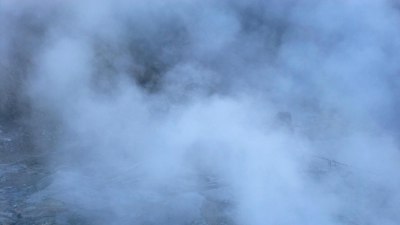The Impact of Changing Weather on Your Favorite Allergies
Explore how changing weather patterns influence allergies and tips for relief.

Image by volodymyr-t on Freepik
As we experience changing weather conditions more frequently, individuals who suffer from allergies are increasingly noticing the effects. Allergies have become a major health concern, not just in terms of discomfort but also as they can lead to more severe health issues. Understanding how weather influences allergy symptoms, along with preventative strategies, can be crucial in managing one's health.
Understanding Allergies
Allergies occur when the immune system reacts to a foreign substance – allergens – as if they were harmful invaders. Common allergens include pollen, dust mites, mold, and pet dander. An allergic response may involve symptoms such as sneezing, itching, and difficulty breathing. These reactions tend to be exacerbated during certain weather conditions, making it essential to understand the intricate relationship between climate and allergies.
Weather Patterns and Allergy Triggers
Weather plays a significant role in influencing the release and distribution of allergens. For example, pollen levels tend to rise during warmer months when plants are in bloom. However, changes in precipitation can also affect pollen counts, as rain can temporarily wash pollen out of the air. The variability in weather conditions, including shifts in temperature, humidity, and air pressure, can consequently dictate the severity of allergic reactions.
Humidity is a critical factor for those with mold allergies. Mold thrives in damp environments, and high humidity levels can increase mold spore counts in the air. Similarly, individuals sensitive to dust mites, which become more prevalent in humid conditions, may experience worsening symptoms in such weather.
Spring Allergies: A Closer Look
Spring is often the worst season for allergy sufferers due to the high pollen counts from trees and grasses. Warmer temperatures can lead to an earlier flowering season, meaning that those with seasonal allergies may start experiencing symptoms sooner than in previous years. Additionally, fluctuating temperatures can lead to the generation of more pollen-producing plants, exacerbating the issue.
According to meteorologists, the frequency and intensity of spring storms can also impact pollen levels. Thunderstorms can lead to pollen being released suddenly, causing spikes in pollen concentration, and thus, allergy symptoms. Staying informed about local weather patterns can aid allergy sufferers in planning outdoor activities accordingly.
Summer Allergies: Heat and Humidity
Summer not only brings hot weather but can also increase mold levels due to high humidity. This is particularly problematic for individuals who are sensitive to both pollen and mold. During periods of extreme heat, lawns often become dry, and gardeners may see an increase in ragweed, an allergenic weed that blooms in the late summer and can last into the fall.
People with allergies should pay attention to the weather reports concerning heat and humidity, as these can heighten their symptoms. Staying indoors during particularly hot days can be beneficial, as can investing in air conditioning to help manage indoor air quality.
Fall Allergies: The Impact of Ragweed
As summer gracefully turns into fall, ragweed becomes one of the predominant culprits of seasonal allergies. This plant releases pollen from late summer through the first frost, making fall a challenging time for allergy sufferers. The impact of climate change has made ragweed a bigger problem; higher carbon dioxide levels can lead to longer growing seasons and increased amounts of pollen.
Moreover, the fall is also the time when leaves begin to fall. When leaves mold or rot, they can also contribute to mold allergies. It is essential for allergy sufferers to monitor fall weather forecasts, particularly regarding the timing of the first frost, which signals the end of ragweed season.
Winter Allergies: Indoor Triggers
While most outdoor allergens decrease significantly during the winter months, indoor allergens such as dust mites and pet dander can become problematic as people spend more time inside. Cold weather can lead to sealed windows and homes, creating stagnant air that is perfect for allergens to thrive. Keep indoor space well-ventilated, and regularly clean areas where dust accumulates.
Additionally, winter can lead to increased humidity from heating systems, thus prompting mold growth in bathrooms and kitchens. Maintaining a low humidity level in the home during the winter months is a good practice for those with allergies.
Shifts in Climate and Allergy Seasonality
Research indicates that shifting climatic conditions are affecting the timing and severity of allergy seasons across the globe. Warmer temperatures are prolonging the growing seasons, while changes in precipitation patterns influence pollen release. Prolonged exposure to allergens could lead to a rise in allergic diseases over time, creating a need for increased awareness and management strategies.
Climate change has the potential to affect the biology of allergenic plants. As carbon dioxide levels rise, many plants grow faster and produce more pollen, creating a significant increase in airborne allergens. With emissions driving climate change, the future of allergy seasons may involve longer durations and more frequent exposures.
Managing Allergies with Weather Changes
Being proactive and prepared can help mitigate allergy symptoms regardless of the season. Here are some strategies to manage allergies effectively:
- Stay informed: Keep an eye on pollen forecasts and weather reports to plan activities accordingly.
- Limit outdoor exposure: On high pollen days, minimize outdoor activity, especially in the morning when pollen counts are typically higher.
- Use air purification systems: Consider using HEPA filters in your home to trap airborne allergens effectively.
- Maintaining clean environments: Regularly clean carpets and upholstery and wash bedding to reduce dust mites and pet dander.
- Medication: Consult with healthcare providers about allergy medication or immunotherapy suitable for your needs.
The Role of Health Professionals
Healthcare providers play a significant role in managing allergies, especially those exacerbated by changing weather patterns. For allergy sufferers, developing a personalized treatment plan can be key to reducing symptoms and enhancing quality of life. Regular visits with an allergist can yield valuable insights into effective management strategies and preventive measures.
The Future of Allergies and Weather
The intersections of climate change and public health continue to raise concerns, including the future of allergies. Advocacy for better awareness of allergic responses to climate change is paramount. By understanding the patterns of weather-related allergies, society can contribute to research efforts aimed at addressing health impacts emerging from changing environmental conditions.
In conclusion, the impact of changing weather on allergies is multi-faceted and requires diligence. By staying informed about the connections between climate patterns and allergens, individuals can take proactive measures to manage their health effectively. As we confront the challenges posed by climate change, adapting our strategies becomes imperative in preserving health and well-being.











